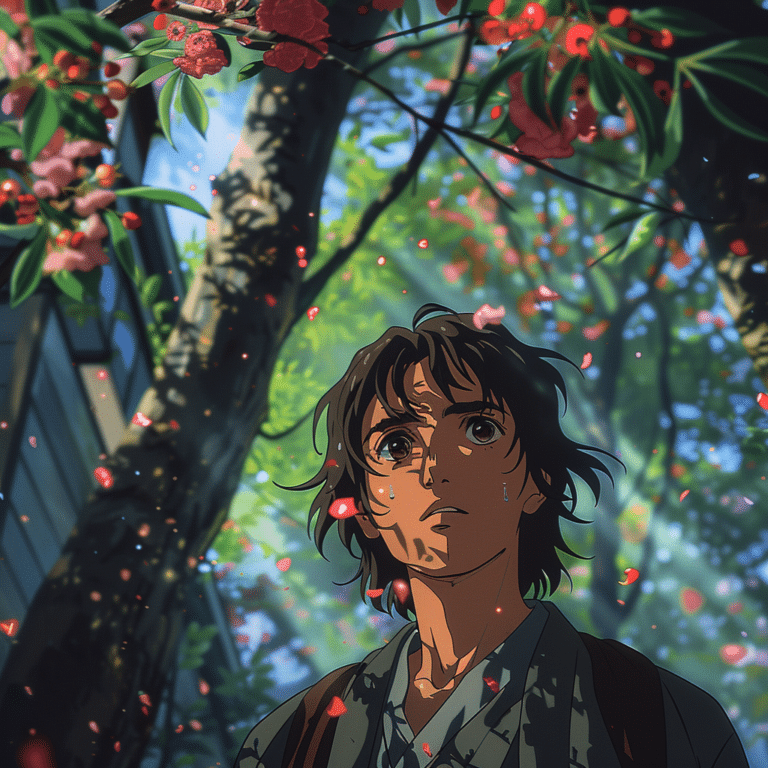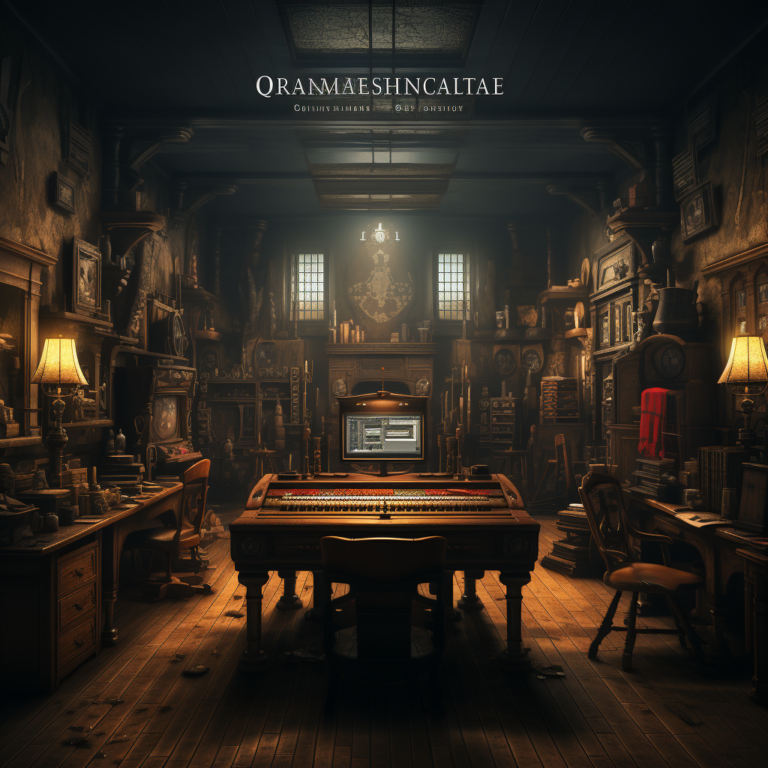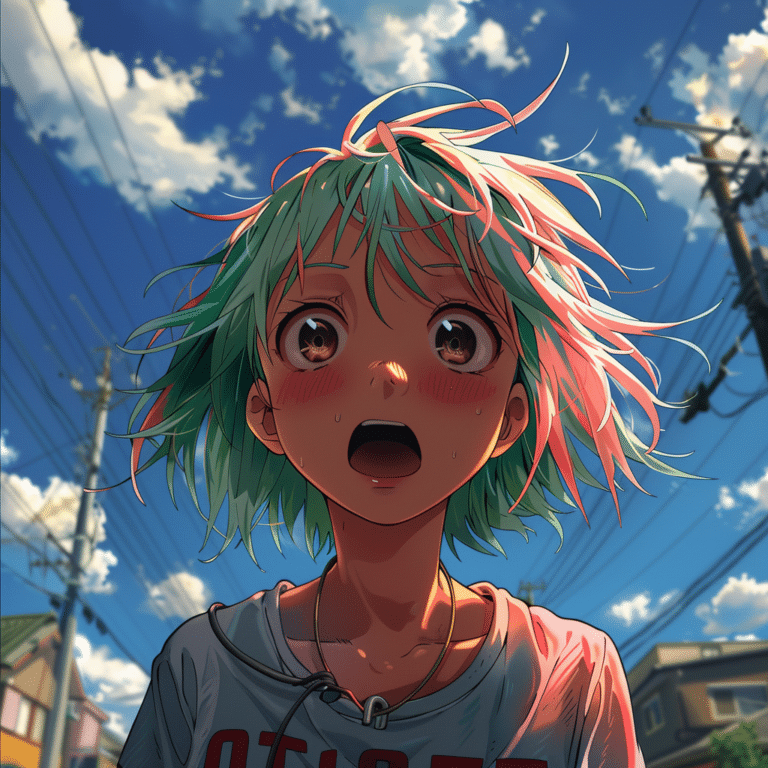The surreal landscape of FLCL season 1, produced by Gainax and Production I.G, stands as a hallmark of eccentric storytelling in anime culture. This six-episode series, aired in 2000, defies conventional narrative structures, exploring the chaotic transition into adolescence. Its unique visual style and themes continue to resonate with audiences decades later. Let’s dive into some transformative elements that make FLCL season 1 a true classic.
5 Themes That Shape FLCL Season 1’s Adolescence Narrative
1. The Complexity of Relationships
FLCL season 1 intricately weaves adolescent relationships, showcasing the confusion and emotional turbulence inherent in growing up. Naota’s interactions with Haruko and Mamimi exemplify the jarring intricacies of first crushes and friendships, reflecting chaotic emotions and expectations. Much like the bonds formed in My Hero Academia (MHA) Season 6, where heroes navigate friendships amid shifting dynamics, these relationships in FLCL paint a vivid picture of how unpredictable love and companionship can be.
Naota’s platonic feelings for Mamimi shift as Haruko disrupts his world, and it’s this chaotic mix that truly embodies adolescent heartache. The series doesn’t shy away from the awkward moments of life. Instead, it dives right into them, offering viewers a nostalgic journey down memory lane.
2. The Burden of Expectations
Adolescents often feel the weight of expectations from parents, peers, and society. Naota, a twelve-year-old boy caught between childhood and adulthood, grapples with what it means to “grow up.” His internal conflict echoes the struggles seen in Attack on Titan (AOT) Final Season, where characters confront dire consequences while navigating societal pressures.
The pressures on Naota are palpable, and they resonate with anyone who’s ever felt overwhelmed by what others expect of them. The series illustrates how the journey of adolescence isn’t just about rebellion; it often demands self-examination and reflects on the heavy expectations bearing down on young shoulders.
3. Rebellion Against Authority
FLCL season 1 captures the spirit of teenage rebellion vividly. Haruko’s disruptive presence in Naota’s life symbolizes a challenge to rules and norms, pushing the envelope of what it means to be an adolescent. This theme resonates with the untamed energy found in the Hotline Miami 2 video game series, where players embrace rebellion against established authorities.
Haruko doesn’t just shake up Naota’s world; she represents the freedom young people crave. The clash between Haruko’s impulsive nature and Naota’s desire to remain grounded serves as a testament to the inner turmoil that accompanies the move toward adulthood.
4. Exploration of Identity
Throughout the series, characters are on a quest for self-discovery. Naota’s struggle with his identity and the impulsive behavior of his peers highlight the uncertainty synonymous with puberty. Similarly, the characters in Jujutsu Kaisen (JJK) Season 1 embark on their own journeys of identity amid action-packed adventures.
Naota’s interactions with Haruko force him to reconsider who he really is. Each bizarre encounter invites him to peel back the layers of his identity, illustrating how adolescence is a time filled with self-discovery, often accompanied by confusion and absurdities.
5. Surrealism as a Reflection of Inner Turmoil
The surreal, often absurdist visuals in FLCL season 1 mirror the internal chaos of adolescence. The iconic scenes featuring robots and fantastical elements symbolize Naota’s emotional journey as he confronts his fears and desires. This surrealism can also be compared to the mind-bending storytelling found in Date A Live Season 5, where fantasies intertwine with reality to create a backdrop for character development.
The show revels in its wild imagery, capturing the unpredictable nature of growing up. This style is not just visual fluff; it’s a critical lens through which we can view Naota’s unfolding narrative, blending humor with heartfelt exploration.

The Visual Style of FLCL Season 1: A Benchmark for Animation
The animation style of FLCL season 1 remains a benchmark in anime. Fusing different artistic techniques, the series effectively illustrates dynamic range and emotional depth. From the jarring transitions that capture the chaos of adolescence to the details that enhance character expressions, this distinctive style draws viewers into its vibrant, chaotic version of reality.
Unlike the polished and calculated animation seen in Dragon Ball Super (DBS) Season 2, FLCL embraces its raw edges. It amplifies the turbulent experience of growing up, setting a standard for innovative storytelling that is rarely matched. Each frame acts as a canvas these characters paint their lives upon, combining the slapstick humor with serious undertones in an unforgettable way.
Animation has come a long way since FLCL, but revisiting its audacious style offers a refreshing reminder of how animation can challenge conventions. Its creativity doesn’t just tell Naota’s story; it invites audiences on a wild ride.
Legacy and Influence of FLCL Season 1 on Modern Anime Trends
The lasting impact of FLCL season 1 is evident in numerous subsequent anime productions. The blend of absurd humor, emotional depth, and experimental storytelling has inspired creators across the genre. Recent titles like JJK Season 2 draw from the stylistic and thematic cues established by FLCL, weaving complex character dynamics with inventive world-building.
Producers and directors cite FLCL as a formative influence. Its approach to storytelling and character exploration laid groundwork for modern anime’s multifaceted emotional narratives. Creators are encouraged to experiment with non-linear storytelling which creates a more immersive viewing experience.
The influence doesn’t stop with direct references; admiration for FLCL pervades in how narrative structures are approached today. As newer shows use its thematic richness, it encourages filmmakers to craft exciting, relatable worlds.

Embracing the Chaos of Youth: The Timeless Relevance of FLCL Season 1
In our rapidly evolving world, FLCL season 1 remains a poignant exploration of the adolescent experience, spanning themes that resonate universally. Its celebration of chaotic emotions, the battle for identity, and the rebellion against societal norms reaches beyond its original airing and persists in today’s cultural context.
As viewers continue to discover and appreciate FLCL, its themes remind us that while adolescence can feel overwhelming, it’s ultimately a beautifully chaotic journey worth embracing. FLCL season 1 captures these feelings in a way that feels relatable even years later.
With its mix of humor, absurdity, and emotional depth, FLCL season 1 secures its place not just in anime history but in the hearts of its audience. As we anticipate future narratives influenced by the lessons found within FLCL, the discussion surrounding youth and identity will resonate for generations.
So, whether you’re catching the series for the first time or revisiting the madness, FLCL season 1 remains a timeless gem, urging us all to embrace the chaos of youth and explore what it truly means to grow up.
Remember, you can check out the latest news on anime and animation, such as what’s next for One Piece or even peruse fascinating narratives like Who Made Me a Princess! Want to explore the filler episodes of One Piece? It’s all on our site, waiting for your curious mind!
Who says growing up has to be ordinary? Buckle up and join Naota on this ride—it’s far from predictable!
FLCL Season 1: A Mind-Bending Journey Through Adolescence
A Whirlwind of Creativity
Did you know that FLCL, or “Fooly Cooly,” is famous for its frantic style and surreal storytelling? It was created by Gainax, the same studio behind classics like “Neon Genesis Evangelion.” FLCL season 1 is only six episodes long, making it a binge-worthy ride through the ups and downs of adolescence. The show’s fast pace and zany visuals give off an impression akin to rollercoasting through a whirlwind of emotions—much like the chaotic experiences of growing up.
And speaking of chaos, the show’s blend of animation techniques keeps viewers on their toes. From vivid colors to rapid scene changes, it feels like FLCL season 1 is constantly throwing new surprises your way. Its creativity has even made it one of the most popular series, appealing to fans who crave something different in their anime diet. FLCL is often compared to other wild anime, yet its unique flavor leaves even seasoned fans pondering what they just watched!
Unconventional Themes and Hidden Gems
FLCL season 1 delves into intriguing themes of puberty, identity, and relationships, wrapped in a quirky narrative. It tells the story of Naota, a boy grappling with the tumultuous emotions of adolescence, and Haruko, a mysterious girl who turns his world upside down. This odd couple dynamic reflects the often irrational and unpredictable nature of teenage love. Interestingly, many anime fans draw parallels between FLCL and narratives like “One Piece,” but you won’t find any filler Episodes Of One Piece here—it’s all killer, no filler.
And here’s another fun tidbit: FLCL season 1’s soundtrack, curated by the band The Pillows, perfectly accentuates the show’s vibe. The catchy rock tunes enhance the highs and lows of the characters, making each scene resonate even more deeply. This captivating music was such a hit that it left an indelible mark on fans. In fact, the emotional undertones in FLCL are so evocative that they manage to linger long after the credits roll.
A Cultural Phenomenon
Ultimately, FLCL season 1 stands out as a landmark in anime history. While the show initially captured a niche audience, it has since gained a cult following that stretches across the globe. Its impact can be felt in various forms of media, much like how fans eagerly await details about the latest One Piece next episode release date. This kind of engagement is a testament to the cultural relevance of FLCL and its ability to resonate with audiences from all walks of life.
In conclusion, FLCL season 1 isn’t just some offbeat anime; it’s a monumental portrayal of adolescence through a lens that celebrates the weird and wonderful aspects of growing up. It invites viewers to embrace their quirks—something we could all stand to acknowledge! So, here’s to a show that dares to break conventions – and to the fans who cherish it just as they would fake ultrasound Pictures or any other playful piece of art.

In what order should I watch FLCL?
To get the best experience, you should watch FLCL in this order: the original FLCL OVA, then FLCL Progressive, followed by FLCL Alternative. After that, check out the recently announced series, FLCL: Grunge, and FLCL: Shoegaze for the newest stories in the franchise.
What the heck is FLCL about?
FLCL follows Naota Nandaba, a quiet twelve-year-old boy whose ordinary life gets turned upside down when the eccentric Haruko shows up, bringing chaos and adventure. It mixes coming-of-age themes with wild sci-fi elements, creating a unique viewing experience.
Where can I watch FLCL original?
You can watch the original FLCL on streaming platforms like Crunchyroll Premium, Funimation, Max, and Max (through Hulu). All five seasons are available for binge-watching whenever you feel like it.
Is FLCL Progressive a sequel to FLCL?
Yes, FLCL Progressive is indeed a sequel to the original FLCL. It expands on the original’s themes and style while introducing new characters and storylines.
Is fooly cooly only 6 episodes?
That’s right! The original FLCL consists of just 6 episodes, making it a quick yet impactful watch that dives deep into complex themes in a short amount of time.
Is FLCL Alternative a prequel?
No, FLCL Alternative isn’t a prequel; it’s actually more like a parallel story that shares the same world as the original FLCL but with different characters and plotlines.
Was Chainsaw Man inspired by FLCL?
While Chainsaw Man is its own unique creation, it took inspiration from various anime, and you can definitely see some FLCL elements shining through in its imaginative storytelling and offbeat humor.
Why the FLCL dub is so important?
The dub of FLCL is super important because it captures the show’s quirky tone and fast-paced dialogue that many fans love. The voice acting really brings the characters to life, making the experience even more enjoyable.
What do the eyebrows represent in FLCL?
In FLCL, the eyebrows symbolize the characters’ emotions and their inner struggles, showing that there’s often more to them than meets the eye. It adds depth to the character designs and themes.
Was Avatar inspired by FLCL?
Yeah, it’s believed that FLCL had some influence on Avatar, especially with its storytelling style and character development. Both series showcase creative world-building and a mix of comedy and drama.
Are FLCL and fooly cooly the same?
Absolutely, FLCL and fooly cooly refer to the same series; “fooly cooly” is just the English pronunciation of the abbreviation “FLCL.” They’re often used interchangeably.
Is FLCL anime worth watching?
If you love unique, artistic storytelling and can appreciate a blend of humor and drama, then FLCL is definitely worth watching. It’s become a classic beloved by fans for a reason.
Why is FLCL called FLCL?
FLCL stands for “Fooly Cooly,” which reflects the series’ quirky and offbeat style. The name itself captures the essence of the show’s vibe, mixing playful nonsense with deeper themes.
Is the FLCL reboot good?
The reboot has received mixed reviews, with some fans loving the new directions in FLCL Progressive and FLCL Alternative while others prefer the original series. It’s worth checking out to form your own opinion.
How do you pronounce FLCL?
You pronounce FLCL as “fooly cooly.” It’s a fun and catchy way to say it, and it fits perfectly with the show’s quirky nature.




















